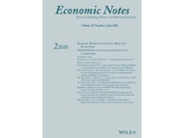In the coming months the European Union will be characterized by four features: a fragile, prolonged and uneven recovery path for the real growth and employment, persistence of a strong monetary policy accommodation, a further implementation of the new supervisory architecture, and a series of downside risks, triggered by structural trends – as migration – or historical event – as Brexit. Which will be the perspectives for the Italian banks? The 2016 Report on the Italian Financial System investigates the key issues using three different perspectives: industrial, institutional and behavioural economics.
Part One offers updated and aggregate evaluations of the health state of the European and Italian banks and of the sustainability of their current business models. Part Two goes in depth in exploring crucial and controversial topics in the evolving state of the new and complex single supervisory architecture. Part Three presents the results that can be obtained applying the tools of behavioural economics to explore the relationships between banking, financial choices and the shape of the regulatory and supervisory setting.
In conclusion, in the 2016 Report the emphasis has been on the today most critical issues of profitability, low rates, Npls, sustainability of business models, complex and incomplete regulatory environment, consolidation, capital levels, bailing-in. However, it is necessary to always remember that in the next years the different business models will be widely and rapidly impacted by the digital innovation. Banks have three to five years at most to become digitally proficient. Revenues and profits will migrate towards banks that successfully use digital technologies to automate processes, create new products, improve regulatory compliance, and disrupt key components of the value chain: many analyses suggest that digital laggards could see up to 35% of net profit eroded, while best performers may realize a profit upside of 40%. This is an additional and vital challenge for our banking system in the near future.




